
You’ve worked hard. You’ve saved every penny. You finally found it – that perfect car, the one that promises freedom, reliability, and that undeniable new car smell. The gleam of the paint, the hum of the engine, the dream of countless trouble-free miles stretching ahead… pure automotive bliss, right? But what if that dream, that joy, that significant financial investment, crumbles into a relentless nightmare in just one short year?
Let’s face it. Sometimes, our cars let us down. Vehicle manufacturers roll out cars that look promising but often don’t live up to the hype. It can suck after spending tens of thousands of dollars or entering a multi-year car loan to develop a case of buyer’s remorse. But it happens all too often, leaving owners with a costly headache instead of the expected automotive delight.
Considering how much new and used cars go for these days, you need to know what you’re getting into. Making a buying decision based only on the exterior aesthetics and specs might get you into trouble. Learning from other vehicle owners’ mistakes is one way to make better choices. Today, we’re pulling back the curtain on a harsh reality of the automotive world, not talking about isolated incidents or a single bad lemon. We’re talking about consistent, widespread patterns of disappointment that lead to profound buyer’s remorse. Our insights are meticulously gathered from vast datasets: rigorous Consumer Reports, the raw, honest feedback of thousands of real owners, and official industry recalls that reveal systemic flaws. This isn’t just hearsay; this is data-driven, cold, hard truth. If you’re even thinking about buying a new or used car soon, you absolutely, positively need to read this before you make a costly mistake. Here are 15 vehicles that owners wish they had never purchased.
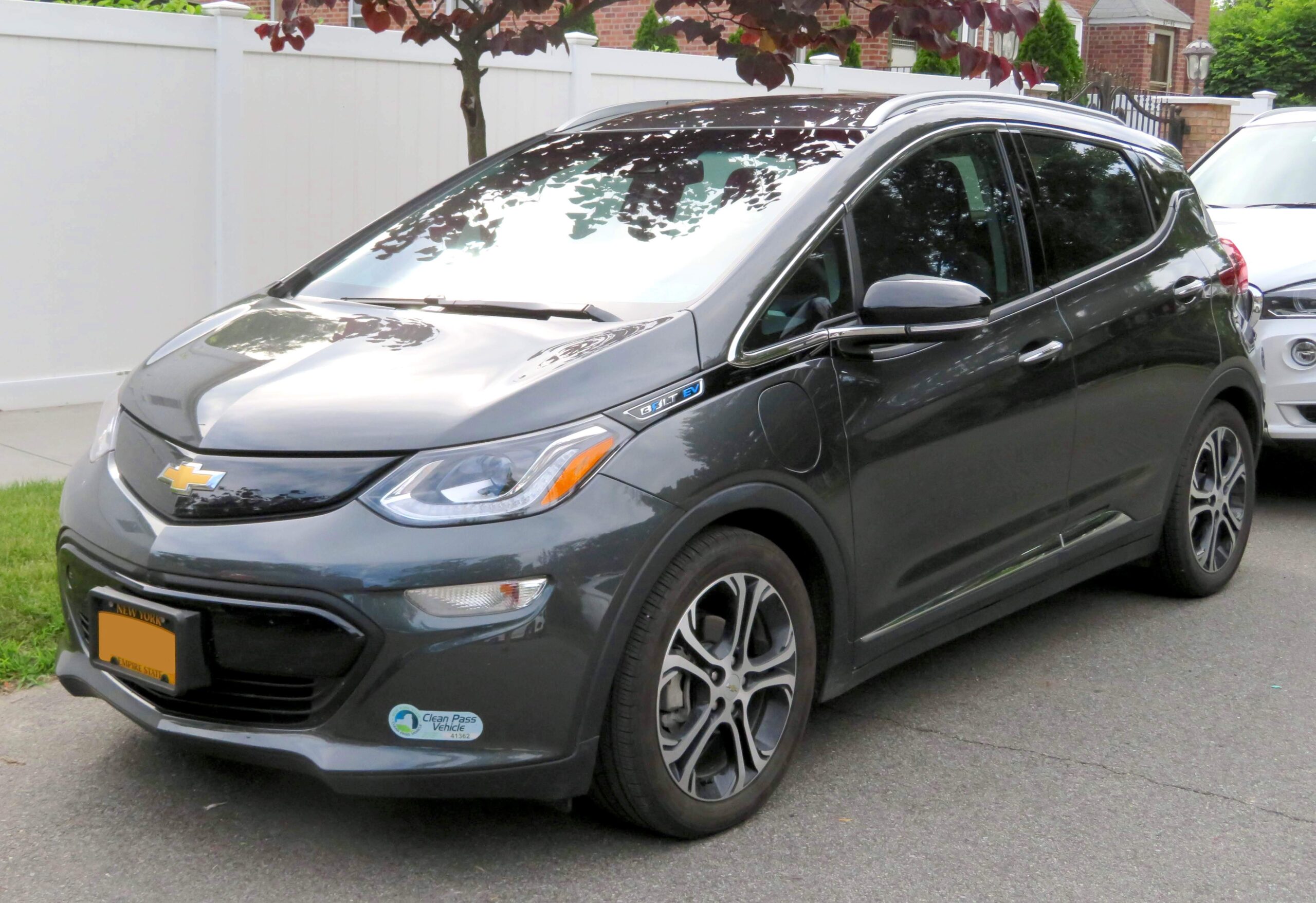
1. **Chevrolet Bolt**General Motors’ Chevrolet Bolt initially garnered praise for its attractive blend of affordability and a respectable electric range, positioning it as an accessible entry point into the burgeoning EV market. However, behind this promising facade, the Bolt has been plagued with a series of significant problems that have overshadowed its initial appeal and led to considerable owner frustration.
The most infamous and concerning issue centers around the Bolt’s battery-related fires. This serious defect led to large-scale recalls in both 2020 and 2021, casting a long shadow over the vehicle’s safety and reliability. The root cause of these fires was traced back to lithium-ion batteries manufactured by LG, which were found to be susceptible to short-circuiting, overheating, and igniting into flames.
Beyond the critical battery problem, the Chevrolet Bolt also faced criticism for its general driving dynamics and passenger comfort. Owners and critics alike often described the ride quality as merely “so-so,” failing to impress or provide a particularly engaging experience. Space for rear passengers was also a common point of contention, often feeling cramped and inadequate for longer journeys or adult occupants.
Furthermore, the vehicle’s handling characteristics were also often rated as mediocre at best. This combination of a critical safety defect with less-than-stellar everyday driving attributes contributes to the Bolt’s placement on this list, turning what appeared to be a smart, economical EV purchase into a source of deep regret for many early adopters.
Car Model Information: 2021 Chevrolet Bolt EV FWD LT
Name: Chevrolet Bolt EV
Caption: 2022 Chevrolet Bolt EV
Manufacturer: General Motors
Production: unbulleted list
ModelYears: unbulleted list
Class: Subcompact car
BodyStyle: hatchback
Layout: Front-engine, front-wheel-drive layout
Predecessor: Chevrolet Spark EV
Categories: 2020s cars, All Wikipedia articles in need of updating, All articles containing potentially dated statements, All articles with unsourced statements, Articles containing potentially dated statements from February 2018
Summary: The Chevrolet Bolt EV (marketed in Europe as Opel Ampera-e) is a battery electric subcompact hatchback manufactured and marketed by General Motors under its Chevrolet brand from late 2016 until late 2023, with a brief hiatus between mid-2021 and early 2022.
The first-generation Bolt was developed and manufactured with LG Corporation. Sales of the 2017 Bolt began in California in December 2016; it was released nationwide and international markets release in 2017. A rebadged European variant was marketed as the Opel Ampera-e in mainland Europe. In 2017, the Bolt was the second-best-selling plug-in car in the United States. It was named the 2017 Motor Trend Car of the Year, the 2017 North American Car of the Year, an Automobile magazine 2017 All Star, and was listed in Time magazine’s Best 25 Inventions of 2016. The Ampera-e was discontinued after 2018. By the end of 2020, GM had sold 112,000 Bolt and Ampera-e cars worldwide. The first-generation Bolt had been subject to at least three recalls due to battery fire risks.
In mid-2023, GM officials said they would discontinue the Bolt; after outcry, they announced plans for a next-generation model, which is expected to be revealed in 2025 for model year 2026.
Get more information about: Chevrolet Bolt
Buying a high-performing used car >>>
Brand: Chevrolet Model: Bolt
Price: $15,961 Mileage: 51,715 mi.
Read more about: Beyond 200,000 Miles: Unpacking the Incredible Longevity of 9 Electric Cars and Their Batteries
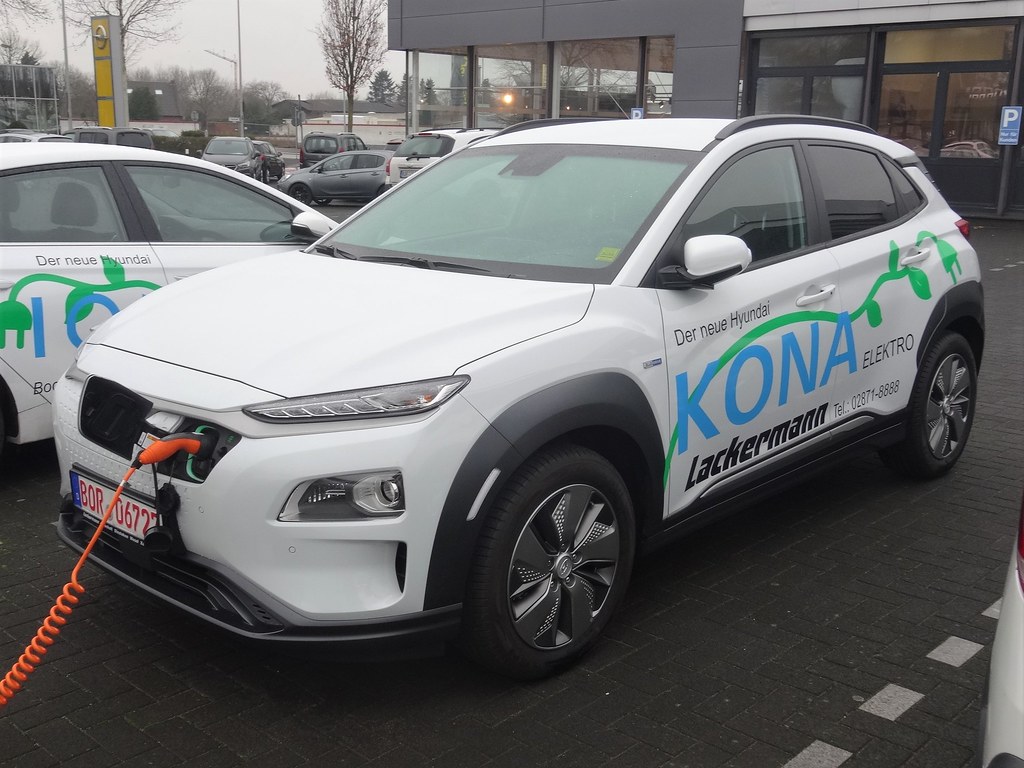
2. **Hyundai Kona Electric**Hyundai has certainly been on a roll in recent years, rolling out a string of interesting and well-received electric vehicles that have impressed with their design and performance. However, even successful automakers have their missteps, and the Hyundai Kona Electric stands as a notable exhibit of this reality. Despite its generally positive reception in some areas, this model has a particularly concerning history.
Unfortunately for its owners, battery fires and subsequent recalls became an undeniable and significant part of the EV’s early history. Hyundai, much like General Motors with the Bolt, was forced to issue a worldwide recall in both 2020 and 2021. The stated intention of these recalls was to “nip the fire risks in the bud” by systematically replacing battery packs in affected electric vehicles, a costly and disruptive process for both the manufacturer and the owners.
However, the battery issues, while critical, proved to be “just the tip of the iceberg” for some Kona Electric owners. The implications of such a widespread and severe defect, coupled with other potential underlying concerns that are not explicitly detailed but alluded to, highlight the profound buyer’s remorse felt by those who invested in this particular EV. This demonstrates how even a vehicle from a generally reputable brand can fall victim to serious design or component flaws, leading to significant disappointment and inconvenience.
Car Model Information: 2019 Hyundai SANTA FE 2.0T Limited
Name: Hyundai Kona
Caption: Hyundai Kona N Line (SX2)
Manufacturer: Hyundai Motor Company
Aka: Hyundai Kauai (Portugal)
Production: 2017–present
ModelYears: 2018–present
Class: Subcompact crossover SUV
BodyStyle: SUV
Layout: ubl
Categories: 2020s cars, All-wheel-drive vehicles, All Wikipedia articles in need of updating, All Wikipedia articles written in British English, Articles containing Chinese-language text
Summary: The Hyundai Kona (Korean: 현대 코나) is a subcompact crossover SUV produced by the South Korean manufacturer Hyundai. The first-generation Kona debuted in June 2017 and the production version was revealed later that year. It is positioned between the Venue or Bayon and the Tucson in Hyundai crossover SUV line-up. The battery electric version called the Kona Electric (or Kona EV) was first launched in South Korea during the first half of 2018 and rolled out gradually worldwide afterwards.
Get more information about: Hyundai Kona
Buying a high-performing used car >>>
Brand: Hyundai Model: Kona Electric
Price: $20,409 Mileage: 80,162 mi.
Read more about: Navigating the Digital Road: Which Car Infotainment System Is Easiest to Use in 2025?
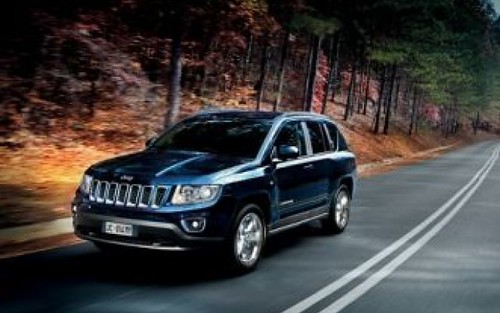
3. **Jeep Compass**The Jeep Compass, marketed as a compact SUV, has unfortunately become synonymous with “serious issues” across various model years, earning it a reputation for being a “migraine headache on wheels” for many of its owners. Its struggles extend beyond minor inconveniences, touching on critical components that impact both drivability and reliability.
A prevalent and highly frustrating complaint from owners centers on the continuously variable transmission (CVT) and the 9-speed automatic transmissions. These units are frequently reported to experience “herky-jerky shifting,” which detracts significantly from the driving experience, making it feel unrefined and unpredictable. Worse yet, these transmissions have been known to suffer from “catastrophic failure,” leading to expensive repairs or even complete replacement, a devastating blow to owner satisfaction and wallets.
Beyond transmission woes, the Compass also faces criticism for its “poor engine performance.” Many owners find the vehicle underpowered or unresponsive, particularly in situations requiring quick acceleration or highway merging. This lack of robust performance is often coupled with reports of “excessive oil consumption,” a common indicator of underlying engine problems that can lead to increased maintenance costs and potential long-term damage if not carefully monitored.
Adding to this litany of problems are persistent “electrical system issues.” Modern vehicles rely heavily on complex electronics, and malfunctions in these systems can affect everything from infotainment to critical safety features. Such widespread and varied reliability concerns make the Jeep Compass a vehicle many owners actively advise others to “steer clear of,” as the dream of owning a rugged, versatile SUV quickly devolves into a cycle of repairs and regret.
Car Model Information: 2020 Jeep Cherokee Latitude Plus
Name: Jeep Compass
Caption: 2019 Jeep Compass
Manufacturer: Jeep
Production: 2006–present
ModelYears: 2007–present
Class: Compact crossover SUV
BodyStyle: SUV
Layout: Front-engine, front-wheel-drive layout
Chassis: Unibody
Categories: 2010s cars, 2020s cars, All-wheel-drive vehicles, All Wikipedia articles written in American English, Articles with short description
Summary: The Jeep Compass is a compact crossover SUV, introduced in 2006 for the 2007 model year. The first generation Compass and Patriot, its rebadged variant, were among Jeep’s first crossover SUVs. The second-generation Compass debuted in September 2016 in Brazil and at the Los Angeles International Auto Show in November 2016, sharing a modified platform with the Renegade. It is positioned between the smaller Renegade and the larger Cherokee globally or the Commander in South America. The third-generation Compass debuted in May 2025, built on the STLA Medium by Stellantis, shared with other PSA Groupe vehicles.
Get more information about: Jeep Compass
Buying a high-performing used car >>>
Brand: Jeep Model: Compass
Price: $15,980 Mileage: 96,780 mi.
Read more about: Your Ultimate Guide to the Best New Streaming Shows of 2025: Certified Fresh Picks!
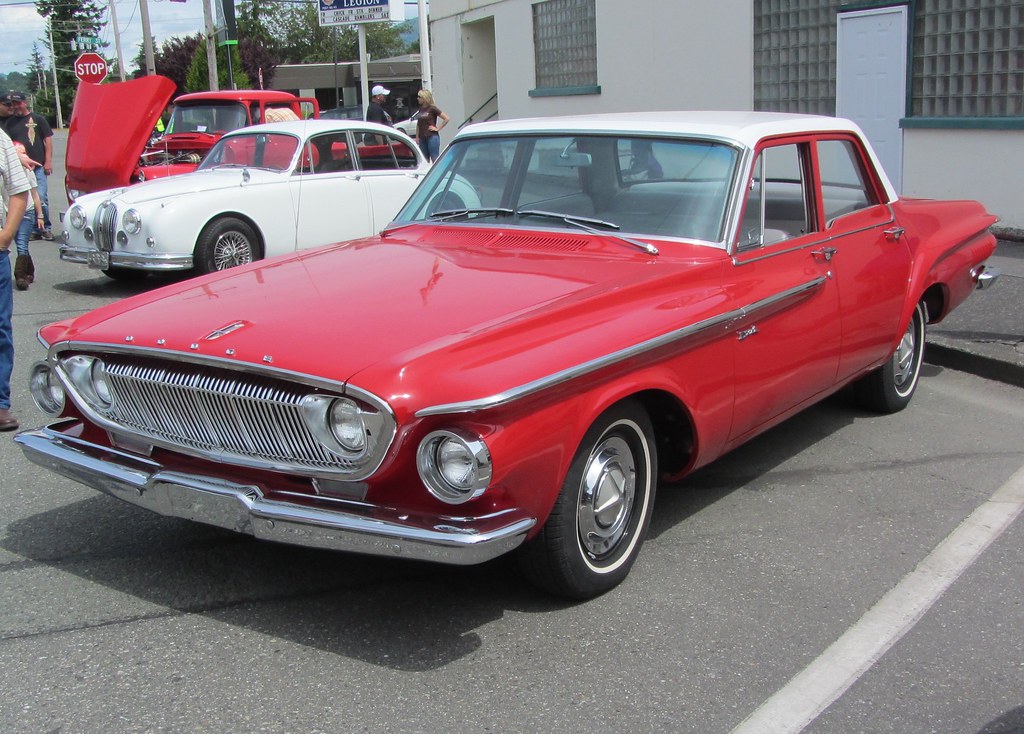
4. **Dodge Dart**The Dodge Dart, a compact sedan, was introduced with the promise of delivering modern styling and efficiency, yet it quickly earned a reputation for having “full-size car problems.” This ironic description perfectly encapsulates the magnitude of issues that left many owners deeply regretting their purchase. The sheer breadth of its reliability shortcomings touched nearly every major system of the vehicle, transforming it into a perennial source of frustration.
From its transmission, often criticized for rough shifts, hesitation, or outright failure, to its engine, which sometimes suffered from performance inconsistencies or premature wear, the Dart consistently failed to deliver dependable operation. The suspension system, too, came under fire for poor ride quality and durability concerns, making even routine commutes a less-than-pleasant experience. Even the braking system, a fundamental safety component, was not exempt from owner complaints, raising concerns about its effectiveness and longevity.
The widespread dissatisfaction is starkly illustrated by data from Consumer Reports, which indicated that “around six in 10 buyers say they are not satisfied with the vehicle.” This high percentage of regret speaks volumes about the Dart’s inability to meet basic owner expectations for reliability, performance, and overall quality. Such a pronounced lack of satisfaction across a significant majority of buyers firmly places the Dodge Dart among the cars many owners wished they had never bought, cementing its legacy as a flawed entry in the compact sedan segment.
Car Model Information: 2015 Dodge Dart SXT
Name: Dodge Dart
Caption: 1966 Dodge Dart GT 2-door hardtop
Manufacturer: Dodge
Production: 1959–1976 (US market)
ModelYears: 1960–1976 (US market)
Class: Full-size
Layout: FR layout
Predecessor: Dodge Coronet#Fourth generation (1957–1959)
Related: Plymouth Valiant,Chrysler Valiant,Dodge Phoenix
Successor: Dodge Aspen,Dodge Diplomat,Talbot Tagora
Categories: 1970s cars, All articles with unsourced statements, Articles with short description, Articles with unsourced statements from December 2023, Articles with unsourced statements from May 2025
Summary: The Dodge Dart is a line of passenger cars produced by Dodge from the 1959 to 1976 model years in North America, with production extended to later years in various other markets.
The production Dodge Dart was introduced as a lower-priced full-size model in 1960 and 1961, but became a mid-size car for one model year for 1962, and was then reduced to a compact for two generations, from 1963 to 1976.
Chrysler had first used ‘Dart’ name plates on two Italian styled show cars, in 1956 and 1957, before it became a Dodge model name. The Dart nameplate was resurrected for a Fiat-derived compact car that was introduced in 2012.
Get more information about: Dodge Dart
Buying a high-performing used car >>>
Brand: Dodge Model: Dart
Price: $9,995 Mileage: 143,082 mi.
Read more about: Road-Tested Comfort: A Definitive Guide to the 12 Best Car Seats for Your Family’s Peace of Mind in 2025

5. **Dodge Grand Caravan**The Dodge Grand Caravan holds a unique place in the hearts of many families, having served as a trusty hauler for generations, creating countless travel memories—some fond, some less so. However, despite its legacy as a family workhorse, the reality for many owners is that these minivans are “anything but smooth driving,” often proving to be a source of significant mechanical grief rather than reliable transport.
The most pervasive and debilitating complaint revolves around “transmission failure,” a common and costly issue that severely compromises the vehicle’s reliability. It’s challenging to depend on a vehicle for family, pet, and cargo hauling when its most critical drivetrain component is prone to giving out. This often occurs after a period of escalating symptoms, signaling its impending demise.
Before transmissions ultimately “go kaput,” owners frequently report a series of alarming precursors. These include “delayed gear engagement,” where the vehicle hesitates to shift into drive or reverse, creating anxious moments. “Rough shifting” is another widespread issue, making acceleration and deceleration jarring, and “slipping” gears are indicative of internal wear that signals an expensive repair is on the horizon. Such issues transform routine drives into stressful experiences, undermining the very purpose of a family vehicle.
Beyond the transmission, many owners also cite “electrical system problems” as a recurring headache. These can manifest in various ways, from malfunctioning power sliding doors to faulty infotainment systems or erratic sensor readings, adding another layer of frustration. Furthermore, “heavy oil consumption” is another common complaint, indicating potential engine wear that requires constant monitoring and topping off of fluids. Given these persistent and significant issues, it’s clear why many owners, if they “could rewind time and have a do-over, they would gladly choose something else.”
Car Model Information: 2019 Hyundai SANTA FE 2.0T Limited
Caption: 2011 Dodge Grand Caravan Mainstreet
Name: Dodge Grand Caravan
Manufacturer: Chrysler Corporation,Daimler AG,Chrysler LLC,Chrysler Group LLC,FCA US LLC
Class: Minivan
Layout: FF layout,F4 layout
Production: November 2, 1983 –August 21, 2020
ModelYears: 1984–2020
Related: Plymouth Voyager,Chrysler Town & Country (minivan),Dodge Mini Ram,Chrysler Voyager,Volkswagen Routan
Assembly: Windsor, Ontario,Fenton, Missouri,Fenton, Missouri,Fuzhou
Successor: Dodge Journey,Chrysler Voyager
Categories: All-wheel-drive vehicles, All articles with unsourced statements, Articles with short description, Articles with unsourced statements from December 2017, Articles with unsourced statements from May 2009
Summary: The Dodge Caravan is a series of minivans manufactured by Chrysler from the 1984 through 2020 model years. The Dodge version of the Chrysler minivans, was marketed as both a passenger van and a cargo van (the only version of the model line offered in the latter configuration). For 1987, the model line was joined by the long-wheelbase Dodge Grand Caravan. Produced in five generations across 36 model years, the Dodge Caravan is the second longest-lived Dodge nameplate (exceeded only by the Dodge Charger). Initially marketed as the Dodge counterpart of the Plymouth Voyager, the Caravan was later slotted between the Voyager and the Chrysler Town & Country. Following the demise of Plymouth, the model line became the lowest-price Chrysler minivan, ultimately slotted below the Chrysler Pacifica.
Sold primarily in the United States and Canada, the Dodge Caravan was also marketed in Europe and other international markets under the Chrysler brand (as the Chrysler Voyager or Chrysler Caravan). From 2008 onward, Dodge marketed the model line only as the Grand Caravan; Ram Trucks sold a cargo-only version of the model line as the Ram C/V Tradesman. The model line was also rebranded as the Volkswagen Routan from 2009 through 2014.
After the 2020 model year, the Dodge Grand Caravan was discontinued, ending production on August 21, 2020. For 2021 production, the Grand Caravan nameplate was moved to Chrysler, which used it for a Canadian-market version of the Chrysler Pacifica (in the United States, the exact vehicle was marketed as the Chrysler Voyager).
For its entire production run, the Dodge Caravan/Grand Caravan was manufactured by Chrysler Canada (now Stellantis Canada) at its Windsor Assembly facility (Windsor, Ontario). From 1987 until 2007, the model line was also manufactured by Chrysler at its Saint Louis Assembly facility (Fenton, Missouri). Since their introduction in late 1983, over 14.6 million Chrysler minivans have been sold worldwide (including export versions and versions sold through rebranding).
Get more information about: Dodge Caravan
Buying a high-performing used car >>>
Brand: Dodge Model: Grand Caravan
Price: $20,409 Mileage: 80,162 mi.
Read more about: Consumer Alert: The 15 New Cars Americans Are Most Likely to Regret Buying in 2025, According to Expert Analysis and Reliability Data

6. **Nissan Sentra**Like many vehicles that have seen numerous generations, the Nissan Sentra has had its ups and downs. While there may be some “good Nissan Sentra model years,” a significant period, specifically “from 2013 to 2019,” stands out as particularly “horrific” for owners due to a litany of pervasive problems. The core of these issues, a recurrent theme across several Nissan models, lies with its infamous continuously variable transmission (CVT).
The CVT in these Sentra model years has been a “thorn in the side of many” owners, becoming a primary source of frustration and regret. Common complaints associated with this transmission include “overheating,” which can lead to reduced performance and premature wear, as well as “jerky acceleration,” making the driving experience anything but smooth or predictable. Additionally, “shuddering” during acceleration or at consistent speeds is frequently reported, creating a sense of mechanical unease and signaling potential transmission issues.
Beyond the problematic CVT, the laundry list of issues for these Sentra models continues. “Engine stalling” is another serious concern that has been reported by owners, posing not only an inconvenience but also a potential safety hazard in traffic. This indicates deeper powertrain reliability problems that go beyond just the transmission itself, suggesting systemic flaws in the vehicle’s engineering during this period.
Furthermore, the Nissan Sentra during these problematic years has been subject to “many recalls related to the vehicle’s airbags, seatbelts, brakes, and more.” While recalls are intended to address safety concerns, a high volume of them across critical safety systems reflects a broader pattern of manufacturing and design deficiencies. This accumulation of issues, from drivetrain performance to safety component integrity, makes the 2013-2019 Nissan Sentra years ones that prospective buyers are well-advised to avoid, lest they inherit a legacy of owner dissatisfaction.
Car Model Information: 2018 Nissan Sentra SV
Name: Nissan Sentra
Caption: 2021 Nissan Sentra SR (B18; Canada)
Manufacturer: Nissan
Aka: Nissan Sunny
Production: 1982–present
Class: Subcompact car
Predecessor: Nissan Sunny#B310
Categories: 1990s cars, 2000s cars, 2010s cars, 2020s cars, All Wikipedia articles written in American English
Summary: The Nissan Sentra is a series of automobiles manufactured by the Japanese automaker Nissan since 1982. Since 1999, the Sentra has been categorized as a compact car, while previously it occupied the subcompact class. Until 2006, Sentra was a rebadged export version of the Japanese Nissan Sunny, but since the 2013 model year, Sentra is a rebadged export version of the Sylphy. The Sentra nameplate is not used in Japan. Many other countries in Latin America sell their versions of the Sunny as the Sentra. In Mexico, the first three generations of the Sentra were known as the Nissan Tsuru (Japanese for crane), and the B13 model was sold under that name until 2017, alongside the updated models badged as Sentra.
In North America, the Sentra currently serves as Nissan’s compact car, despite being rated as a mid-size car by the EPA due to its interior volume since the 2007 model year. While previous Sentras were subcompacts, the Sentra has grown over the years, with the Nissan Versa having replaced the Sentra in the entry-level area.
The Sentra name was created for Nissan by Ira Bachrach of NameLab, and Bachrach describes the origin as “Nissan wanted consumers to understand that it was quite safe even though it was small. The word Sentra sounds like central as well as sentry, which evokes images of safety.”
Get more information about: Nissan Sentra
Buying a high-performing used car >>>
Brand: Nissan Model: Sentra
Price: $8,599 Mileage: 73,999 mi.
Read more about: Buyer Beware: These 10 Popular Cars Are Known Money Pits After 100,000 Miles, According to Automotive Experts
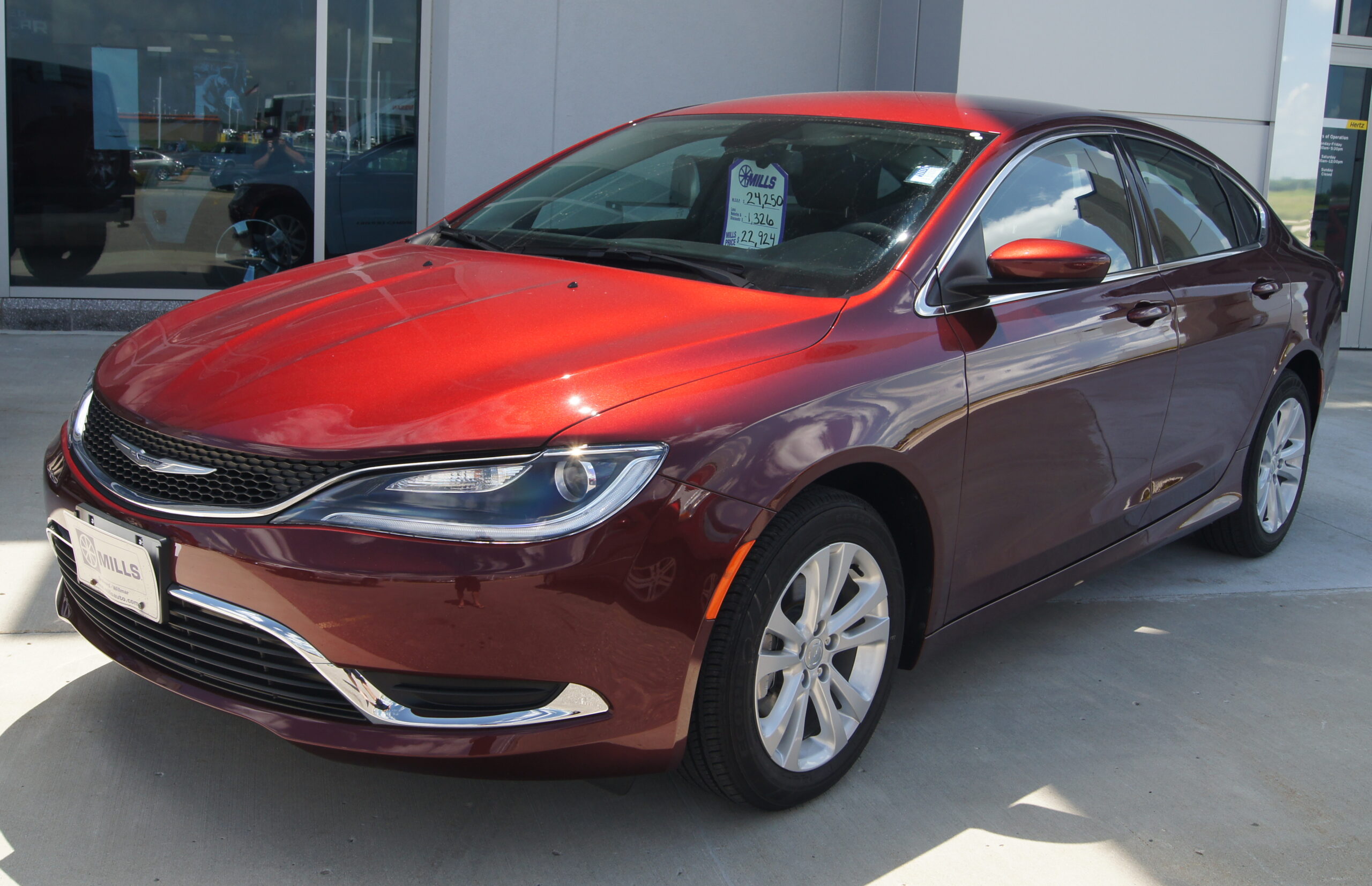
7. **Chrysler 200**The Chrysler 200, which was manufactured from 2011 to 2017, promised a refreshed take on the mid-size sedan segment, yet it quickly became known for a multitude of reliability issues that left owners consistently frustrated. This vehicle’s tenure in the market was unfortunately marked by a widespread inability to deliver on the dependability that consumers expect from a daily driver.
Among its many reliability problems, the 9-speed automatic transmission proved to be “especially problematic” for owners of the 2015, 2016, and 2017 models. This particular transmission, intended to enhance fuel efficiency and smoothness, instead became a notorious source of complaints. It suffered from frequent malfunctions, often exhibiting unpredictable shifts and a general lack of refinement that detracted significantly from the driving experience.
The transmission issues were not merely minor annoyances; for many, “transmission failure was a thing, too,” indicating that these units were prone to complete breakdown, leading to incredibly costly repairs or replacements. This fundamental flaw in a major mechanical component is a significant contributor to owner dissatisfaction, turning an anticipated purchase into a financial burden.
Beyond the persistent transmission woes, the Chrysler 200 also “suffers from engine performance problems.” While the specific nature of these issues can vary, they collectively point to an unreliable powertrain that might experience anything from excessive oil consumption to stalling or a general lack of power. Such engine troubles, combined with the prevalent transmission failures, created a double whammy of mechanical unreliability for the Chrysler 200, solidifying its place among the cars that frequently lead to buyer’s remorse.”
Car Model Information: 2013 Chrysler 200 Touring
Name: Chrysler 200
Manufacturer: Chrysler
Production: 2010–2016
ModelYears: 2011–2017
Assembly: Sterling Heights, Michigan
Class: Mid-size car
Sp: us
Predecessor: Chrysler Sebring
Categories: 2010s cars, All articles with dead external links, All articles with unsourced statements, Articles with dead external links from July 2020, Articles with permanently dead external links
Summary: The Chrysler 200 is a mid-size sedan that was manufactured and marketed by Chrysler from model years 2011 to 2017 across two generations in four-door sedan and two-door convertible (first generation only) body styles.
The 200 nameplate debuted on the 200C, a prototype hybrid vehicle shown at the 2009 North American International Auto Show in Detroit and based on the Chrysler 300. The 200C concept was engineered to accept either traditional gasoline, hybrid or full-electric powertrains.
Get more information about: Chrysler 200
Buying a high-performing used car >>>
Brand: Chrysler Model: 200
Price: $7,995 Mileage: 117,030 mi.
Read more about: The Top 7 Sedans Engineered for Endurance: Conquering 250,000 Miles with Proper Care

8. **Nissan Altima**The Nissan Altima, a familiar sight on roads everywhere, has, for many owners, transitioned from a promising purchase to a significant source of disappointment. A major contributor to this buyer’s remorse stems from its continuously variable transmission (CVT), which proved particularly problematic in models from 2013 to 2019. This crucial component, designed for smooth, efficient power delivery, instead often delivered frustratingly inconsistent performance and a notable “droning noise during acceleration” that quickly became an irritant.
Beyond the persistent CVT issues, the Altima raised concerns regarding both safety and ownership satisfaction. Its “braking performance has consistently underperformed in testing,” demanding longer stopping distances than many class rivals. This is a critical safety aspect that cannot be overlooked. Furthermore, reports of “excessive oil consumption and oil leaks” suggest underlying engine durability problems that necessitate constant monitoring and potential expensive repairs.
Compounding these mechanical and safety deficiencies, the Altima’s “infotainment system feels dated and unresponsive,” diminishing the everyday driving experience. While the car may appear “reliable overall” in some metrics, these significant quality-of-life and performance shortcomings collectively detract from the long-term satisfaction owners expect. The Altima’s blend of critical flaws makes it a vehicle many wish they had avoided.
Car Model Information: 2023 Nissan Altima SR FWD
Name: Nissan Altima
Caption: 2024 Nissan Altima SR (L34; US)
Manufacturer: Nissan
Aka: Nissan Bluebird
Production: 1992–present
Class: Compact car
Predecessor: Nissan Bluebird,Nissan Stanza
ModelYears: 1993–present
Categories: 2000s cars, 2010s cars, 2020s cars, All-wheel-drive vehicles, All Wikipedia articles written in American English
Summary: The Nissan Altima is a mid-size car manufactured by Nissan since 1992. It is a continuation of the Nissan Bluebird line, which began in 1955.
The Altima has historically been larger, more powerful, and more luxurious than the Nissan Sentra but less so than the Nissan Maxima. The first through fourth-generation cars were manufactured exclusively in the United States and officially sold in North and South America, along with the Middle East and Australia. For other markets, Nissan sold a related mid-size sedan called the Nissan Teana which was between the Altima and Maxima in terms of size. In 2013, the Teana became a rebadged version of the fifth-generation Altima.
The name “Altima” was originally applied to a top trim line of the Nissan Leopard for the Japanese market in 1986, and then to the Nissan Laurel Altima mid-size car sold in Central America and the Caribbean before 1992. In 1992, Nissan discontinued the Stanza which was a Nissan Bluebird clone, replacing it with the US-built Altima, while remaining a compact car. The first Altima was produced in June 1992, as a 1993 model. All Altima models for the North American market were built in Smyrna, Tennessee, until June 2004, when Nissan’s Canton, Mississippi plant also began producing the model to meet high demand.
Get more information about: Nissan Altima
Buying a high-performing used car >>>
Brand: Nissan Model: Altima
Price: $19,988 Mileage: 33,732 mi.
Read more about: Beyond the Hype: 12 Underrated Cars That Offer More Than Meets the Eye

9. **Nissan Versa Note**The Nissan Versa Note often attracted buyers with its promise of a “super-cheap small hatchback,” an economical entry into car ownership. However, this low price point regrettably “mirrors the quality level,” leading to a quick onset of buyer’s remorse for many. The initial appeal of affordability rapidly faded when confronted with the realities of its performance and mechanical reliability.
Once again, Nissan’s continuously variable transmission (CVT) emerges as a central point of frustration, proving to be the primary mechanical Achilles’ heel of the Versa Note. Owners consistently reported this unit “frustrated Nissan Versa Note owners to no end” due to its unreliable operation and inconsistent power delivery. A drivetrain that struggles to perform reliably undermines the very foundation of an economical daily driver.
Further exacerbating the CVT’s deficiencies was the “anemic acceleration from the 1.6-liter 4-cylinder engine.” This combination of an underpowered engine and a problematic transmission transformed routine driving into a surprisingly stressful endeavor, particularly when merging onto highways. For a vehicle where practicality and ease of use should be paramount, these significant shortcomings made the Versa Note a purchase many wished they could reverse.
Car Model Information: 2019 Hyundai SANTA FE 2.0T Limited
Categories: All set index articles, Articles with short description, CS1 Mexican Spanish-language sources (es-mx), CS1 Portuguese-language sources (pt), CS1 Spanish-language sources (es)
Summary: Nissan Versa is an automobile nameplate used by the Japanese manufacturer Nissan in the Americas for the following models:
According to a Nissan press release in 2008, “versa” is short for “versatile space” meant to imply the spaciousness of the interior and configurable cargo arrangements.
Get more information about: Nissan Versa
Buying a high-performing used car >>>
Brand: Nissan Model: Versa Note
Price: $20,409 Mileage: 80,162 mi.
Read more about: Beyond the Hype: 10 Undervalued Sports Cars Primed to Skyrocket in Value Soon, According to Experts
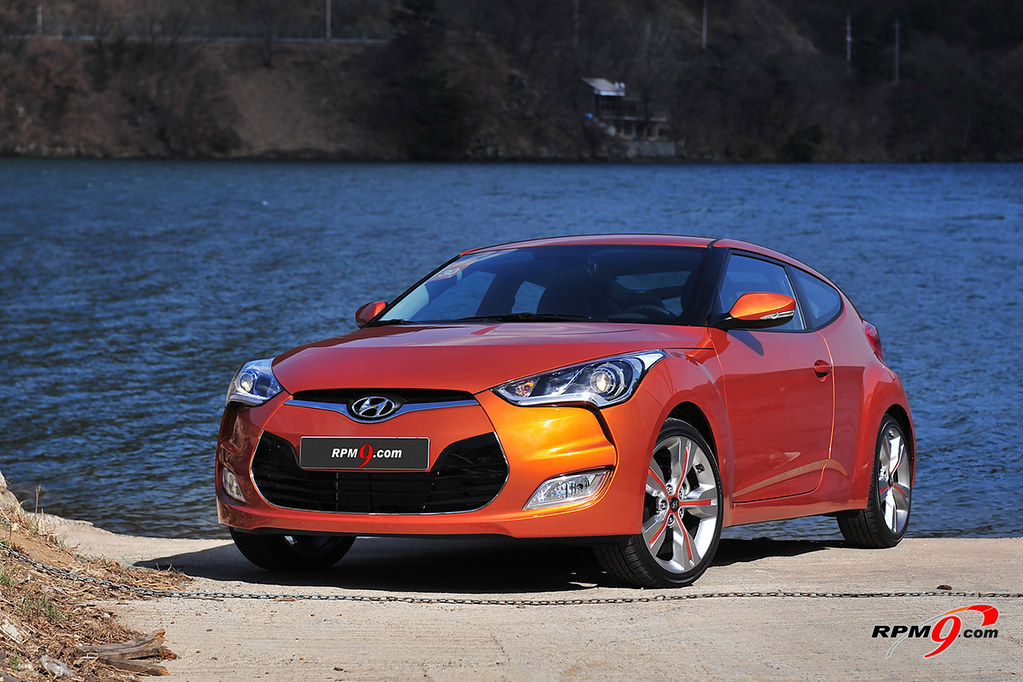
10. **Hyundai Veloster**The Hyundai Veloster, with its “cool-looking car with distinctive styling, three doors, and responsive handling,” certainly made an impression. It promised a unique and engaging driving experience that stood out in its class. Yet, beneath this undeniably appealing exterior, the Veloster harbored a series of “problems that are hard to ignore,” ultimately leading to profound disappointment and regret for many who took the plunge.
One of the most alarming issues impacting the Veloster was its engine, which, for some owners, led to “catastrophic failure.” This isn’t merely an inconvenience; an engine problem of this magnitude can result in repairs so extensive they often exceed the vehicle’s market value, transforming an affordable sports-oriented compact into a financial burden. Such a fundamental flaw in the powertrain speaks volumes about underlying reliability concerns.
Adding to the mechanical headaches, the Veloster’s “dual-clutch transmission has issues like delayed acceleration, slipping, and jerky shifts.” While dual-clutch units are known for their performance, these reported malfunctions significantly hampered the driving experience, making it less refined and predictable. Furthermore, widespread complaints about “suspension and steering problems” highlighted a broader pattern of quality control oversights. These collective issues ensured the Veloster, despite its charm, landed firmly on the list of regrettable automotive purchases.
Car Model Information: 2013 Hyundai Veloster Base
Name: Hyundai Veloster
Manufacturer: Hyundai Motor Company
Production: 2011–2022
Class: Sport compact car
Layout: Front-engine, front-wheel-drive layout
BodyStyle: hatchback
Predecessor: Hyundai Tiburon
ModelYears: 2012–2022
Assembly: Ulsan
Categories: All Wikipedia articles in need of updating, All articles with unsourced statements, Articles containing Korean-language text, Articles with short description, Articles with unsourced statements from May 2018
Summary: The Hyundai Veloster (Korean: 현대 벨로스터, romanized: Hyeondae Belloseuteo) is a compact car first produced in 2011 by Hyundai, with sales beginning in South Korea on March 10, 2011, and in Canada and the United States since the fall of 2011. In South Korea, it was marketed under Hyundai’s ‘Premium Youth Lab’. It was unveiled on January 10, 2011, at the Detroit Auto Show, and fills the void left when Hyundai discontinued the Hyundai Tiburon after the 2008 model year.
The car differs from most other hatchbacks with its asymmetrical door configuration, featuring one large door on the driver side and two smaller doors on the passenger side. This configuration is more common on commercial vehicles and minivans.
Get more information about: Hyundai Veloster
Buying a high-performing used car >>>
Brand: Hyundai Model: Veloster
Price: $9,991 Mileage: 73,577 mi.
Read more about: Beyond the Hype: 12 Underrated Cars That Offer More Than Meets the Eye
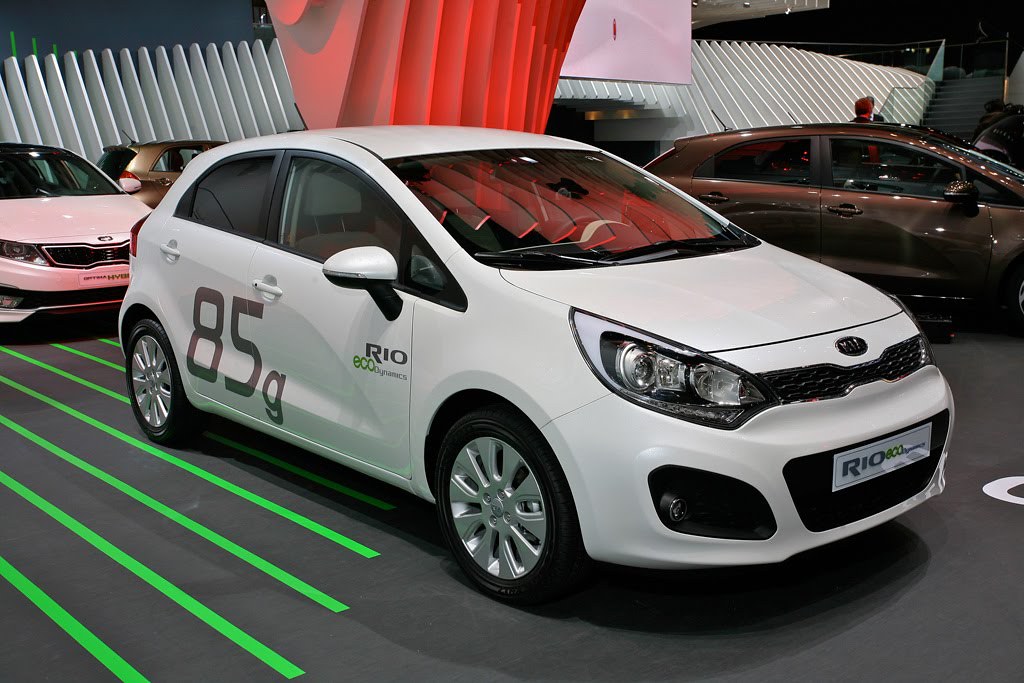
11. **Kia Rio**Positioned as an affordable and efficient entry-level vehicle, the Kia Rio often seemed like a smart, budget-friendly choice. However, for a significant number of owners, its reputation for being economical was overshadowed by persistent engine problems, ultimately leading to considerable buyer’s remorse. The promise of low cost quickly dissolved when confronted with unexpected mechanical issues.
The core of the Rio’s troubles frequently manifested as “engine issues,” notably “rough idling and misfires.” These are more than mere annoyances; such symptoms often signal deeper problems, typically “because of problems with the spark plugs or ignition coils.” While these components might seem minor, their malfunction directly impacts the vehicle’s drivability and can lead to costly repairs if not promptly addressed, eroding the perceived value.
Beyond the powertrain’s shortcomings, owners consistently “complain about the cheap interior quality and comfort issues.” While some compromises are expected in an economy car, a persistently unrefined and uncomfortable cabin detracts significantly from the overall ownership experience, making every journey less pleasant. This combination of critical engine reliability concerns and a subpar interior ensures the Kia Rio frequently delivers more frustration than the trouble-free affordability it initially suggested.
Car Model Information: 2023 Kia Rio S
Name: Kia Rio
Caption: Fourth generation Kia Rio
Manufacturer: Kia
Aka: Kia Pride (2005–2017),Kia K2 (China; 2011–2020)
Production: November 1999 – December 2023
ModelYears: 2001–2023 (North America)
BodyStyle: hatchback
Class: Subcompact car
Layout: Front-engine, front-wheel-drive layout
Predecessor: Kia Pride,Kia Avella
Successor: Kia K3 (BL7),Kia Soluto
Categories: 2000s cars, 2010s cars, Articles containing Korean-language text, Articles with short description, CS1 Croatian-language sources (hr)
Summary: The Kia Rio (Korean: 기아 리오) is a subcompact car manufactured by Kia from 1999 to 2023. Body styles have included a three and five-door hatchback and four-door sedan, equipped with inline-four gasoline and diesel engines, and front-wheel drive.
The Rio replaced the first generation Pride—a rebadged version of the Ford Festiva—and the Avella, a subcompact sold as a Ford in some markets. A second generation was introduced in 2005 in Europe and in 2006 in North America, sharing its platform with the Hyundai Accent, a subcompact manufactured by its sister Hyundai Motor Company in South Korea.
In August 2023, the K3 was introduced as its successor in several markets such as Mexico and the GCC countries.
Get more information about: Kia Rio
Buying a high-performing used car >>>
Brand: Kia Model: Rio
Price: $16,385 Mileage: 22,509 mi.
Read more about: Mary, Mother of Jesus: Unpacking the Profound Reverence and Diverse Interpretations Across Global Faiths and Centuries
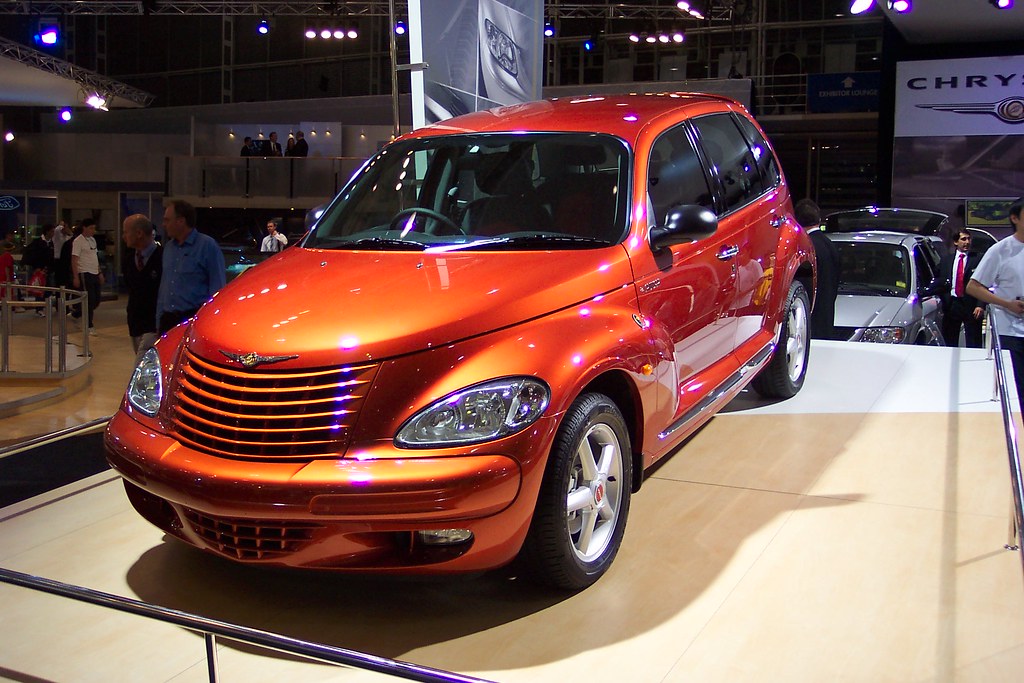
12. **Chrysler PT Cruiser**The Chrysler PT Cruiser, with its unmistakably “retro style,” was a vehicle that undeniably sparked strong opinions—some loved its unique aesthetic, while others seemed to “love to hate” it. Yet, the styling was merely the tip of the iceberg, as “the looks aren’t the only things wrong with the vehicle.” For many owners, the PT Cruiser rapidly transitioned from a bold personal statement to a relentless mechanical ordeal, securing its unfortunate spot on this list.
The sheer volume of reported engine problems for the PT Cruiser is staggering. Owners detailed “engine issues galore,” including frequent “stalling, rough idling, overheating, and head gasket failure.” Head gasket failures, in particular, represent a severe and often prohibitively expensive repair, capable of rendering the vehicle economically unviable. This widespread failure across fundamental engine components points to deeply rooted design or manufacturing flaws.
Adding to these critical powertrain deficiencies, the PT Cruiser was also plagued by persistent “transmission and electrical problems, among other things.” A vehicle suffering from simultaneous failures in its crucial drivetrain and complex electrical systems is a recipe for constant frustration, frequent trips to the service center, and exorbitant repair bills. These pervasive issues collectively explain why so many owners ultimately “regretted their buying decision” for the Chrysler PT Cruiser.
Car Model Information: 2019 Hyundai SANTA FE 2.0T Limited
Name: Chrysler PT Cruiser
Manufacturer: Chrysler
ModelCode: PT,PG
Production: 2000–2010
ModelYears: 2001–2010
Assembly: Toluca, Mexico State
Designer: Bryan Nesbitt
Class: Compact car
BodyStyle: convertible
Platform: Chrysler PT platform
Related: Dodge SRT4,Dodge Neon
Predecessor: Dodge Neon
Successor: Lancia Delta#Third generation
Layout: Front-engine, front-wheel-drive layout
Engine: ubl
Transmission: Ultradrive#40TE
Wheelbase: 103 in
Abbr: on
Length: 168.8 in
Width: 67.1 in
Height: 63 in
Weight: 3123 lb
Categories: 2010s cars, All articles with unsourced statements, Articles with short description, Articles with unsourced statements from March 2018, Cars discontinued in 2010
Summary: The Chrysler PT Cruiser is a compact car that was built by the American company Chrysler from 2001 until 2010. Introduced as a five-door hatchback wagon, a two-door convertible variant was also made from 2005 until 2008.
Originally planned as a Plymouth model, the PT Cruiser was ultimately marketed as a Chrysler when Plymouth was discontinued. Intended to invoke 1930s aesthetics, the exterior of the PT Cruiser was designed by Bryan Nesbitt. The model received an intermediate facelift for the 2006 model year. Interior packaging was noted for its high roof, high h-point seating, and flexible cargo and passenger configurations enabled by a multi-level rear cargo shelf and rear seats a user could fold, tumble, or remove.
The PT Cruiser was produced in Mexico and Austria at the Toluca Car Assembly and Eurostar Automobilwerk factories respectively. By the end of production in July 2010, worldwide production had reached 1.35 million.
In its nameplate, PT stands for “Personal Transport” or “Personal Transportation”. PT was the PT Cruiser’s product code for the Mexican-made units.
Get more information about: Chrysler PT Cruiser
Buying a high-performing used car >>>
Brand: Chrysler Model: PT Cruiser
Price: $20,409 Mileage: 80,162 mi.
Read more about: Dean Martin Wasn’t The Man Everyone Thought He Was: Unveiling His Eclectic and Opulent Car Collection
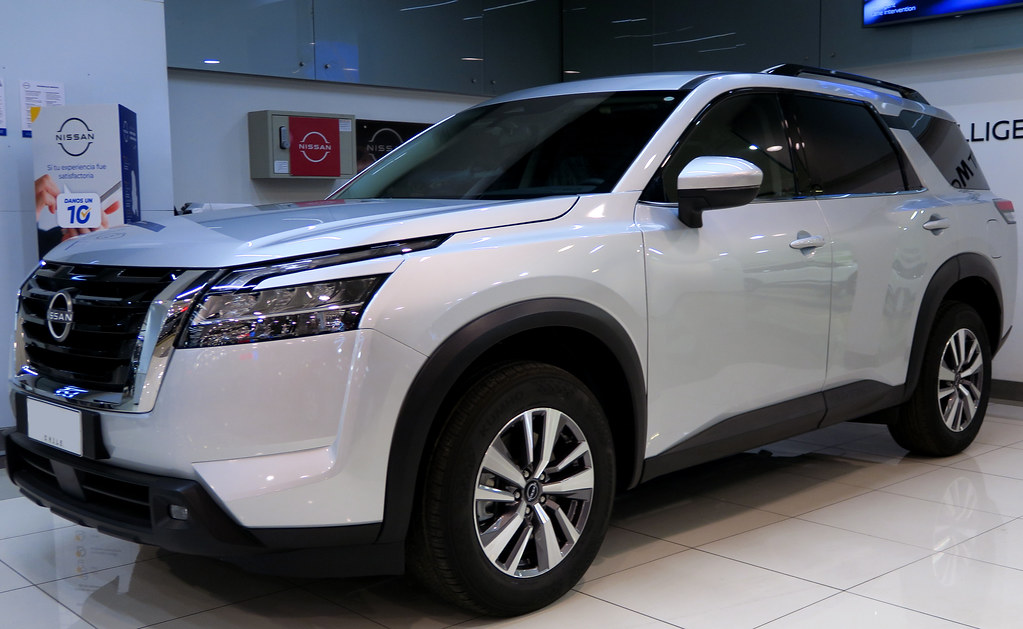
13. **Nissan Pathfinder**The Nissan Pathfinder, historically a popular SUV, promised rugged capability and ample space for families. However, for a notable portion of its owners across various model years, the reality of ownership has brought significant disappointment, turning an anticipated workhorse into a source of constant frustration. The primary culprit, once again, is a familiar mechanical issue within Nissan’s stable.
Central to the Pathfinder’s shortcomings is its continuously variable transmission (CVT), which owners describe as a major “issue of contention.” This transmission has been implicated in a range of problems, including “rough shifting, shuddering, and even overheating.” Overheating, especially, is a serious concern as it can lead to accelerated wear and potentially catastrophic failure of the unit, compromising both performance and safety.
Indeed, the severity of these CVT issues often culminates in the “chagrin of some Nissan Pathfinder owners” having to entirely “replace the transmission,” a repair that is both incredibly costly and inconvenient. Beyond the notorious CVT, the Pathfinder also faced complaints regarding “engine issues and fuel system problems.” These additional mechanical weaknesses only serve to compound owner dissatisfaction, demonstrating why the Pathfinder, despite its popularity, frequently leads to profound buyer’s remorse.
Car Model Information: 2023 Nissan Pathfinder Platinum
Name: Nissan Pathfinder
Caption: 2022 Nissan Pathfinder Platinum 4WD (R53, US)
Manufacturer: Nissan
Production: 1985–present
ModelYears: unbulleted list
Layout: unbulleted list
Class: unbulleted list
Chassis: unbulleted list
Predecessor: unbulleted list
Successor: unbulleted list
Categories: 1990s cars, 2000s cars, 2010s cars, 2020s cars, All-wheel-drive vehicles
Summary: The Nissan Pathfinder is a range of sport utility vehicles manufactured by Nissan since 1985. Until the third-generation model, the Pathfinder is based on Nissan’s compact pickup truck platform which it shares with the Navara/Frontier.
The Pathfinder was marketed as the Nissan Terrano (Japanese: 日産・テラノ, Hepburn: Nissan Terano) outside North America. Beginning in 2004, the vehicles were marketed globally as the Pathfinder.
In 2012, the R52 series Pathfinder was released as a three-row crossover SUV based on the unibody Nissan D platform, moving away from the body-on-frame chassis format. The role of a mid-size body-on-frame SUV in Nissan’s global lineup was passed to the Terra/X-Terra, which was released in 2018 and based on the D23 series Navara.
Get more information about: Nissan Pathfinder
Buying a high-performing used car >>>
Brand: Nissan Model: Pathfinder
Price: $37,772 Mileage: 46,270 mi.
Read more about: The Ultimate Guide to Avoiding a Transmission Nightmare: Decoding 12 Cars with Notoriously Bad Gearbox Problems
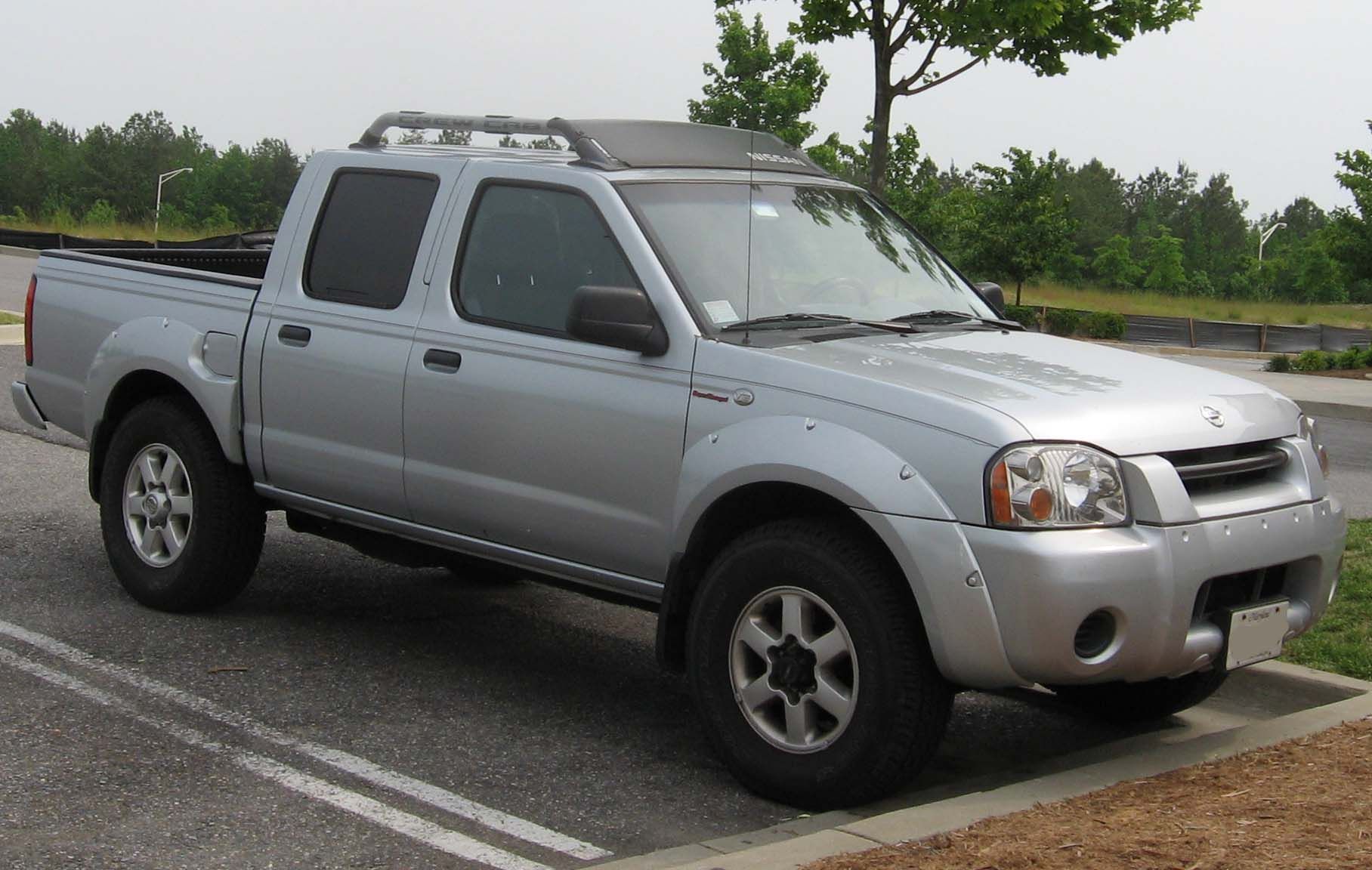
14. **Nissan Frontier**The Nissan Frontier, a mid-size pickup truck, should ideally embody durability and reliability for demanding tasks. Yet, a specific period, notably the 2005 to 2010 model years, proved to be notoriously problematic, leaving owners literally “shaking their heads and pounding the dashboard with their fists.” This era of the Frontier is defined by a critical design flaw that had devastating consequences for its transmission.
The primary mechanical disaster for these model years stemmed from a severe manufacturing defect: “the radiator leaks coolant into the transmissions.” This unacceptable design oversight led to catastrophic internal damage within the transmission unit. The resulting symptoms included “slipping gears, herky-jerky shifting, and transmission failure,” rendering these trucks profoundly unreliable and often unusable for their intended purpose.
Adding to the transmission catastrophe, owners also reported widespread “engine and timing chain issues.” These are significant mechanical concerns that extend beyond a single component, indicating deeper reliability shortcomings throughout the powertrain. For a vehicle meant for work and rugged use, such fundamental and pervasive problems translated directly into immense owner frustration, exorbitant repair costs, and a strong sense of buyer’s remorse, firmly positioning these Nissan Frontiers as models to be actively avoided.
Car Model Information: 2014 Nissan Frontier S
Categories: All set index articles, Articles with short description, Nissan vehicles, Set index articles on cars, Short description is different from Wikidata
Summary: The Nissan Frontier is a nameplate used on three different pickup truck models by Nissan:
Nissan Frontier (international), an alternative nameplate for the NP300/Navara on some markets
Nissan Frontier (North America), a rebadged NP300/Navara from 1997 to 2021, then became a separate model since 2021
Nissan Frontier Pro, a rebadged Dongfeng Z9 PHEV that will be available from 2025.
Get more information about: Nissan Frontier
Buying a high-performing used car >>>
Brand: Nissan Model: Frontier
Price: $13,435 Mileage: 131,197 mi.
Read more about: The Ultimate Guide to Avoiding a Transmission Nightmare: Decoding 12 Cars with Notoriously Bad Gearbox Problems

15. **Chrysler Pacifica Hybrid**The Chrysler Pacifica Hybrid entered the market as an intriguing proposition: a “popular minivan” blending family utility with the promise of enhanced fuel efficiency via its “plug-in hybrid powertrain.” However, for many who embraced this innovation, the initial appeal quickly faded, replaced by the pressing question: “is that enough to offset the battery and electrical problems?” For a significant number of owners, the answer has been a firm “No.”
The central source of frustration and regret for Pacifica Hybrid owners lies squarely within its complex hybrid system. Consistent reports detail a range of debilitating issues, including “battery drain, inconsistent all-electric range, and battery failure.” These are not minor inconveniences; a hybrid battery that fails prematurely or drains unexpectedly fundamentally negates the vehicle’s core promise of efficiency, often leaving owners stranded or facing astronomically expensive repairs.
Compounding the hybrid powertrain’s unreliability, the Pacifica Hybrid also faced complaints concerning “the electric continuous variable transmission.” While CVTs can be temperamental, their integration into a complex hybrid system introduces additional points of failure, exacerbating mechanical uncertainty. This combination of critical battery issues, unreliable electric range, and transmission woes meant the Pacifica Hybrid, despite its promising concept, frequently delivered more mechanical headaches than practical, fuel-efficient family transport, solidifying its place among regrettable automotive purchases.
**The Road to Regret: Why Due Diligence Matters**
As we conclude our deep dive into the vehicles that consistently leave owners with profound buyer’s remorse, a stark truth emerges: the allure of a car’s initial promise often crumbles under the weight of real-world reliability issues. From luxury sedans to practical SUVs and innovative hybrid trucks, these models, despite their initial hype or esteemed badges, have ultimately delivered frustration instead of satisfaction. They serve as potent reminders that a glossy brochure rarely tells the whole story.
The journey through these examples underscores that issues can range from glaring mechanical failures—like problematic transmissions and catastrophic engine defects—to high, unexpected costs of ownership and simply a failure to deliver on the promised driving experience. These factors transform an exciting purchase into a recurring financial drain and a source of constant irritation. Our meticulous insights, drawn from extensive data, real owner feedback, and official recalls, expose consistent patterns of disappointment, moving beyond mere hearsay to present cold, hard truth.
Car Model Information: 2022 Mitsubishi Outlander Sport 2.0 ES
Name: Chrysler Pacifica (RU)
Manufacturer: Chrysler (automotive brand)
Aka: Chrysler Voyager,Chrysler Grand Caravan (Canada, 2021–present)
Production: 2016–present
ModelYears: 2017–present
Assembly: Windsor, Ontario
Designer: Irina Zavatski,Winnie Cheung (interior)
Class: Minivan
BodyStyle: 5-door minivan
Layout: Front-engine, front-wheel drive,Front-engine, all-wheel drive
Platform: Compact U.S. Wide platform
Related: Chrysler 200#Second generation (2014–)
Engine: Chrysler Pentastar engine#3.6L,FCA Global Medium Engine
Motor: 2x electric motors (SiEVT main motor & motor generator; PHEV)
Transmission: ZF 9HP transmission,automatic transmission,Continuously variable transmission
Drivetrain: PHEV
ElectricRange: cvt
Battery: val,lithium-ion battery
Wheelbase: 3089 mm
Abbr: on
Order: flip (hybrid)
Length: 203.6 in
Width: 79.6 in
Height: convert
Weight: {{convert,1964,kg,lb,abbr=on,order=flip
Predecessor: Chrysler minivans (RT)
Categories: 2010s cars, All-wheel-drive vehicles, Articles with short description, CS1 Spanish-language sources (es), Cars introduced in 2016
Summary: The Chrysler Pacifica is a minivan produced by the Chrysler division of Stellantis since the 2017 model year. Replacing the Chrysler Town & Country, the Pacifica is the sixth generation of Chrysler minivans, taking its name from the 2004–2008 product line. Along with serving as the first minivan with a plug-in hybrid drivetrain, the Pacifica has also served as a platform for autonomous vehicle development.
For the 2020 model year, Chrysler repackaged the lower-trim versions of the Pacifica as a revived Chrysler Voyager, largely to expand fleet sales of the model line; following the retirement of the Dodge Grand Caravan, the Chrysler Voyager was introduced in Canada for 2021 as the Chrysler Grand Caravan (moving the nameplate from Dodge to Chrysler after 36 years). Following the retirement of the Chrysler 300 sedan, the Pacifica/Voyager/Grand Caravan is currently the only vehicle marketed by Chrysler.
Chrysler has assembled the Pacifica minivan (and the Voyager/Grand Caravan) in its Windsor Assembly facility in Ontario (home to Chrysler minivan assembly since 1983).
Get more information about: Chrysler Pacifica (minivan)
Buying a high-performing used car >>>
Brand: Chrysler Model: Pacifica Hybrid
Price: $16,199 Mileage: 36,168 mi.
Read more about: From Dream Machine to Daily Nightmare: 10 Vehicles That Tested Their Owners’ Patience
Ultimately, for any prospective car buyer, the lesson is clear: robust due diligence is not merely advisable, it’s absolutely crucial. Looking beyond exterior aesthetics and initial specifications, and instead prioritizing proven long-term dependability, realistic performance, and genuine user satisfaction, is paramount. Learning from the costly mistakes of these 15 vehicles can safeguard your investment and ensure that your next automotive acquisition truly brings joy and peace of mind, rather than a relentless nightmare of regret.



